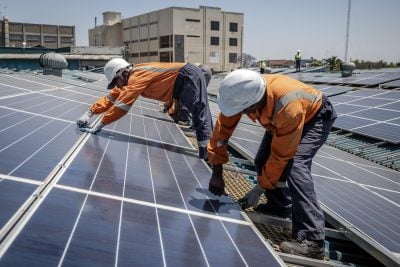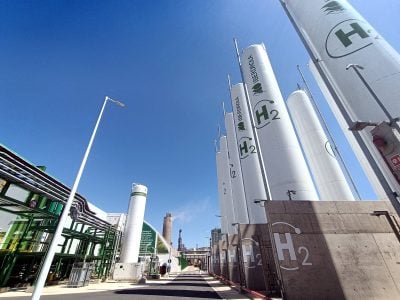Simandou, located 550km from the capital Conakry in southeastern Guinea, is among the most biologically diverse stretches of vegetation in the world.
However it is the battle for the resources lying beneath the ground which have made the 110km mountain range infamous on the international stage.
The region is home to some of the largest untapped high-grade iron ore deposits anywhere on earth, and if harnessed, observers believe it could potentially produce millions of tonnes per year, double Guinea’s GDP and create thousands of jobs.
Yet the mine has never been successfully exploited.
Legal disputes, corruption allegations and the absence of infrastructure to export the mineral have stifled development of the contested mine for years, but change may finally be on the horizon.
On 25 February Israeli billionaire Beny Steinmetz and the government of Guinea settled their long-running dispute over concessions and licences awarded for Simandou.
Steinmetz’s BSG Resources (BSGR) was controversially awarded rights to two of Simandou’s four deposits in 2008 in the final years of Lansana Conté’s 24-year reign as president.
Conté’s government, described by a Human Rights Watch report as presiding over a “criminalization of the state”, stripped Anglo-Australian mining giant Rio Tinto (which had held all rights to Simandou since 1997) of the two deposits, with BSGR reportedly paying only $165m for the rights.
Two years later, BSGR sold 51% of its rights, and the nearby Zogota mine, to Brazilian mining giant Vale for $2.5bn.
However, since Alpha Condé became president and the country’s first democratically elected leader in 2010, he has publicly committed to reforming the sector.
The 2008 BSGR deal, shrouded in bribery allegations, was of particular interest to Condé. In 2012 a review panel set up to probe historical mining deals began investigating bribery claims involving officials and BSGR.
The company denied any illegal activity and responded by filing a “notice of dispute” against the government in 2014 for revoking its rights to Simandou.
Accusations and legal wranglings have long dogged the project.
An associate of BSGR was jailed in the US in 2014 for obstructing an FBI probe into the bribery claims, while Rio Tinto, holder of the two other Simandou blocks, tried to sue BSGR and Vale, alleging a conspiracy to steal its rights. The case was dismissed in 2015.
What the future holds for a project where many have tried and failed over the years – at a time when public dissatisfaction with Guinea’s ruling party persists and questions linger over global iron ore demand – remains to be seen.
“Following this agreement, BSGR relinquishes its claims on blocks 1 and 2 of Simandou and both parties waive all outstanding procedures,” said BSGR in a statement announcing the decision.
Abdoulaye Magassouba, Guinea’s minister of mines and geology, was bullish following the news. He described the settlement in an interview shared on the department’s Facebook page as “a great victory for Guinea” and praised President Alpha Condé as showing “extraordinary courage”.
“We want to look towards the future,” he said. “The country has recovered one of the most important iron ore deposits in the world.”
Rio Tinto holds 45% of Simandou blocks 3 and 4, China’s state-owned Chinalco has 40% and the government the remaining 15%.
The Anglo-Australian firm has itself faced allegations over its Simandou dealings and seemed keen to exit the project but a 2018 deal to sell its shares to Chinalco fell through.
“Rio Tinto and Chinalco . . . will continue to work with the Government of Guinea to explore other options to realise value from the world-class Simandou iron ore deposit,” it said at the time.
Next steps
What their next steps will be are not known. John Meyer, mining analyst at broking and corporate finance firm SP Angel, believes Rio has little appetite to persist with Simandou.
“Rio Tinto and Chinalco have worked on Simandou for 22 years, though their ultimate objectives remain unclear,” he says.
“Rio Tinto have so much high-grade hematite iron ore in Western Australia that developing a further mine at Simandou may not have been their top priority.”
Robert Besseling, executive director at risk intelligence firm EXX Africa, sees Chinalco as the likely beneficiaries of February’s settlement given their strong presence in Guinea’s bauxite sector.
“The most likely actor to develop the Simandou project is Chinalco. Chinese firms have taken a huge stake in Guinea’s bauxite mining sector, which indicates their strong relations with the government,” he says.
“Chinalco has also expressed continued interest in uniting the four blocks, which the government supports.
“Without uniting the entire project, the cost of building the railway line will be restrictive.
“I do not believe Rio Tinto is in a competitive position compared to Chinese interests.”
Guernsey-registered BSGR, which also has a presence in copper and gold mines and owns the Koidu diamond mine in Sierra Leone, may have lost out on Simandou, but Steinmetz will remain a key player in iron ore mining in the country.
“At the request of the Republic of Guinea, a new group of investors (presented by and including Mr. Beny Steinmetz) will exploit the Zogota deposit, in order to export iron ore, according to an accelerated timetable,” said BSGR’s February statement.
“The parties are delighted that this agreement opens a new chapter in their relationship that enables the development of a world-class mining project for the benefit of the people of Guinea.”
Under the agreement, Niron Metals, founded in 2018 by Mick Davis, former CEO of mining group Xstrata, will develop the nearby Zogota mine with BSGR retaining an interest.
“Niron believes that the Zogota deposit can be brought into production on an accelerated timetable, thereby helping to unlock the potential of Guinea’s rich resources for the benefit of all stakeholders,” Niron said in a statement.
Former French President Nicolas Sarkozy was reportedly a key figure in the Steinmetz settlement and SP Angel’s Meyer says the “unlikely” partnership could prove fruitful.
“Mick Davis, the former CEO of Xstrata has the ability to kickstart the iron ore industry in Guinea with the right ethical approach.
His unlikely combination with Beny Steinmetz as brokered by Nicolas Sarkozy creates a strong team with sufficient expertise to finance new mines and infrastructure in the region.”
A long-standing hurdle to Simandou’s development is inadequate infrastructure.
The government has estimated the cost of developing the mine and associated infrastructure, including the creation of a 650km railway and a port, at $20bn.
The prospect of such expenses has contributed to past inaction.
Significantly, the plans for the Zogota deposit will see exports taken to nearby Liberia.
“The Zogota project will be permitted to send its ore through Liberia using existing iron ore rail infrastructure, which is a huge benefit for the project’s development and seeking investors,” Besseling says.
However as seen in 2018 when civil unrest plagued local elections and strikes by those working and living near the country’s abundant bauxite mines erupted, Besseling believes the planned 2020 elections (Condé is rumoured to be eyeing a third term) could hamper progress.
“Populist sentiment ahead of the 2020 elections will increase risk of contract frustration and industrial action across Guinea’s mining sector, which may still thwart development plans,” he says.
“If the project runs behind its development schedule, it will face the risk of contract alteration.”
Such political upheaval could also halt any tangible progress on the main Simandou deposits.
“Until the 2020 elections, the government will be tied to meeting populist demands from key stakeholders, such as tribal leaders and labour groups, who all seek to benefit from Simandou,” he adds.
“If President Condé implements his third term ambitions, all policy-making will be distracted for at least another year.”
Meanwhile, mining minister Magassouba said: “The country has created the opportunity to develop a deposit of a certain value as well, in this case the deposit of Zogota.
And the goal of any public policy is the improvement of the living conditions of the people.”
A lever for development
More than 50% of Guinea’s 12.6m population live in poverty and while the bauxite mining industry has boomed in recent years (Guinea was responsible for 40% of China’s imports of 68m tonnes in 2017), the impact among ordinary citizens has been nominal.
“The mining sector will not solve all our problems,” Magassouba added.
“The mining sector is a lever for the development of our economy.”
At a time when iron ore demand from China appears to be on the wane – its February imports of 83m tonnes were the lowest seen since April 2017 – and with long-standing infrastructure challenges and potential political upheaval on the horizon, the future for Simandou and any benefits it could bring, remain unclear.
Want to continue reading? Subscribe today.
You've read all your free articles for this month! Subscribe now to enjoy full access to our content.
Digital Monthly
£8.00 / month
Receive full unlimited access to our articles, opinions, podcasts and more.
Digital Yearly
£70.00 / year
Our best value offer - save £26 and gain access to all of our digital content for an entire year!
 Sign in with Google
Sign in with Google 



